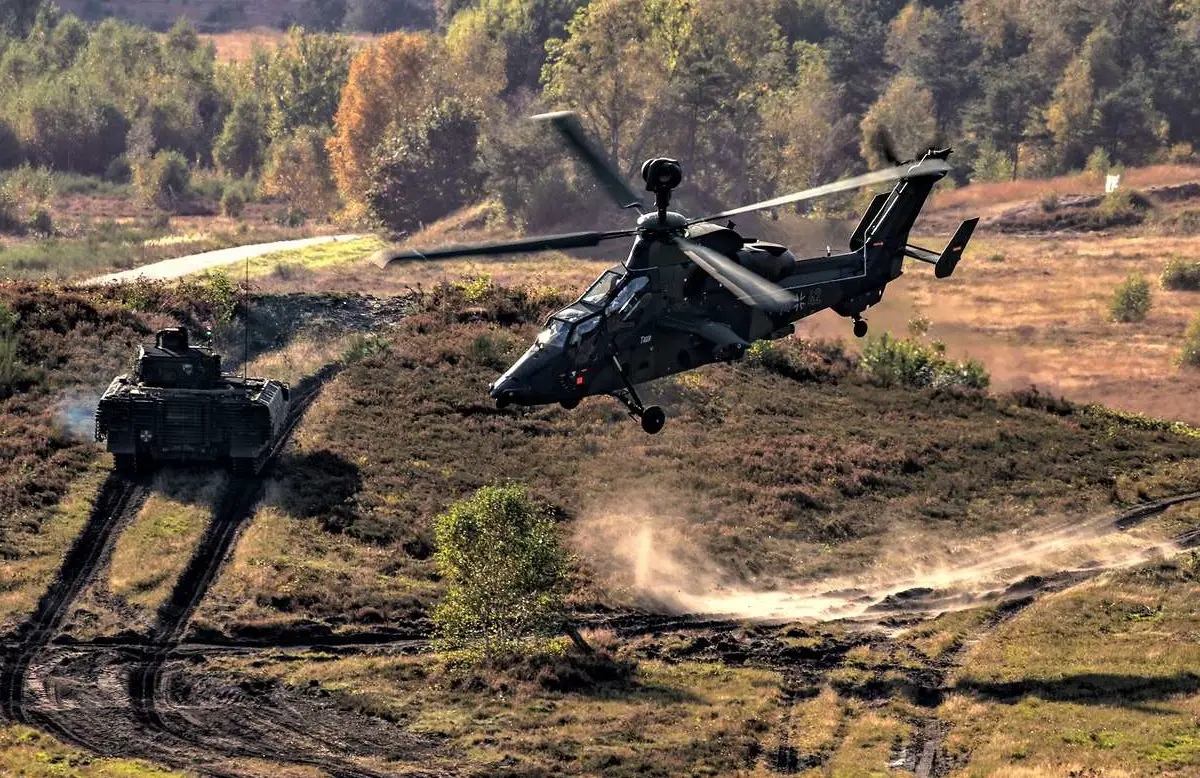The German Federal Ministry of Defence has unveiled its plans for the phased retirement of the Airbus Tiger combat helicopters currently in service with the Bundeswehr. The final units are set to conclude their service by 2032, marking a significant reduction from the current fleet of 55 helicopters. This downsizing will be executed gradually over the next few years, with the aim of reaching 33 operational units by 2028. Some helicopters were slated to remain operational until 2038, but economic considerations have prompted an acceleration of the retirement schedule. Germany’s decision positions it as the second country to retire Tiger combat helicopters, following Australia’s choice of the Boeing AH-64E Apache as its successor. Meanwhile, Spain and France have opted to continue operating Tigers, tying their use to an upgrade to the Mk II+ standard.
The Eurocopter Tiger, a four-blade, twin-engine attack helicopter, entered service in 2003 and is manufactured by Airbus Helicopters, formerly known as Eurocopter. Known as the Tigre in France and Spain (French and Spanish for Tiger), and simply the Tiger in Germany, it was initially developed during the Cold War as an anti-tank platform. However, the collapse of the Soviet Union led to a shift in focus, and France and Germany decided to develop it as a multirole attack helicopter, achieving operational readiness in 2008. The Tiger holds the distinction of being the first all-composite helicopter developed in Europe, incorporating advanced features like a glass cockpit, stealth technology, and high agility to enhance survivability. Over the years, improved variants with more powerful engines and compatibility with a broader range of weapons have been introduced. The Tiger has seen combat in Afghanistan, Libya, and Mali since its deployment.

The Tiger is capable of undertaking a wide range of combat missions, including armed reconnaissance and surveillance, anti-tank and close air support, escort and protection of friendly assets; and can operate during day or night in all weather conditions, and has been designed to include operations in the aftermath of nuclear, biological, or chemical warfare. The Tiger can also be used in the maritime environment, able to operate from the decks of ships including frigates, and during extreme weather conditions.[41] Amongst the Tiger’s notable qualities, it possesses very high levels of agility, much of which is attributed to the design of its 13-meter four-bladed hingeless main rotor; the Tiger can perform full loops and negative g manoeuvres.[42] Power is provided by a pair of FADEC-controlled MTU Turbomeca Rolls-Royce MTR390 turboshaft engines.
The KHT (Kampfhubschrauber Tiger), formerly known as UHT (Unterstützungshubschrauber Tiger), is a medium-weight multi-role fire support helicopter designed for the Bundeswehr. An agreement between the German government and Eurocopter in March 2013 paved the way for the introduction of 51 Tiger UHs into service. The KHT is equipped to carry PARS 3 LR “fire and forget” and/or HOT3 anti-tank missiles, along with 70 mm Hydra 70 air-to-ground fire support rockets. It also features four AIM-92 Stinger missiles for air-to-air combat. Unlike the HAP/HCP version, the KHT lacks an integrated gun turret but can be fitted with a 12.7 mm gunpod if necessary. The design emphasizes multirole capability, ensuring effectiveness across a spectrum of mission scenarios and against a diverse range of targets. Notably, it incorporates a mast-mounted sight with second-generation infrared and CCD TV cameras, offering a range of 18 km.















